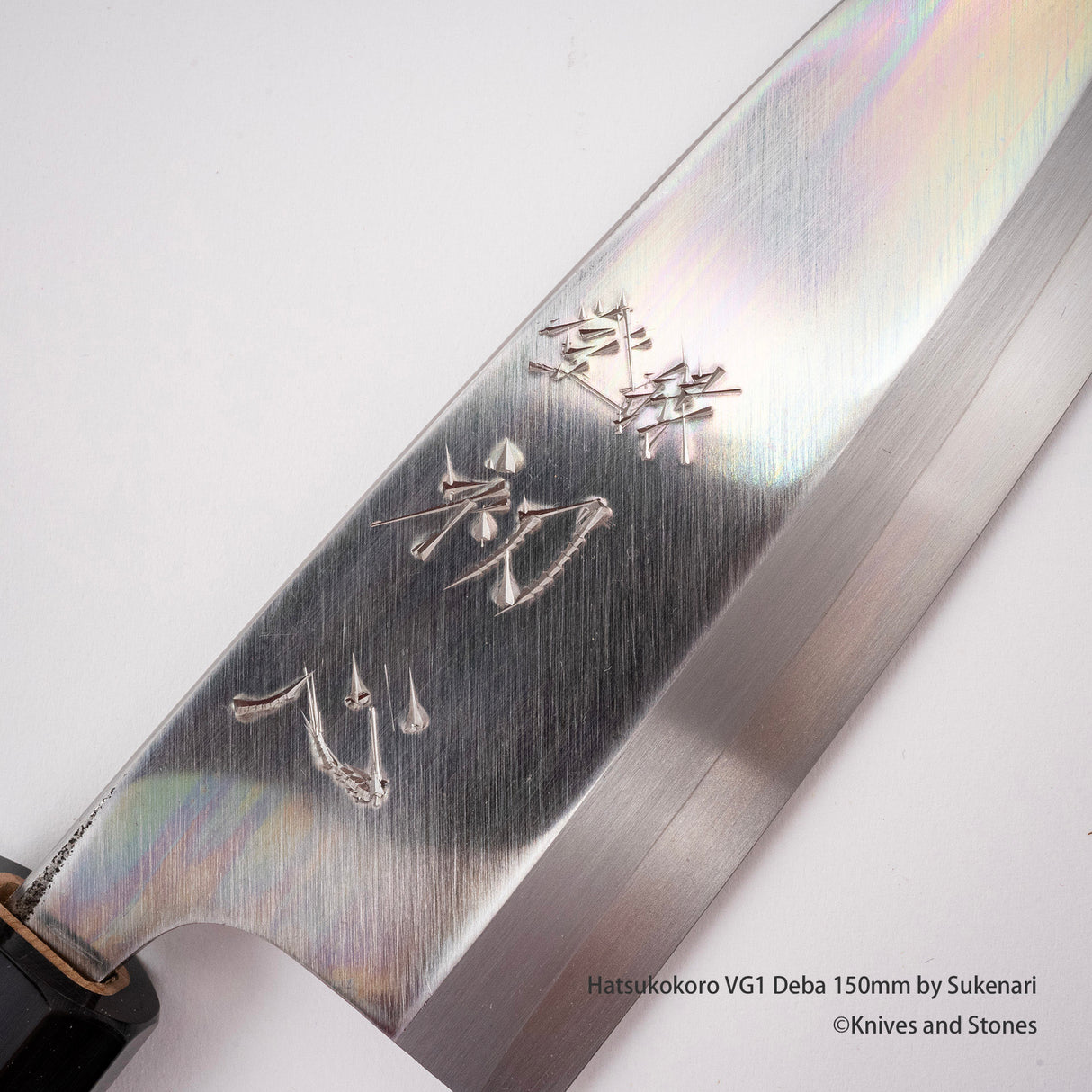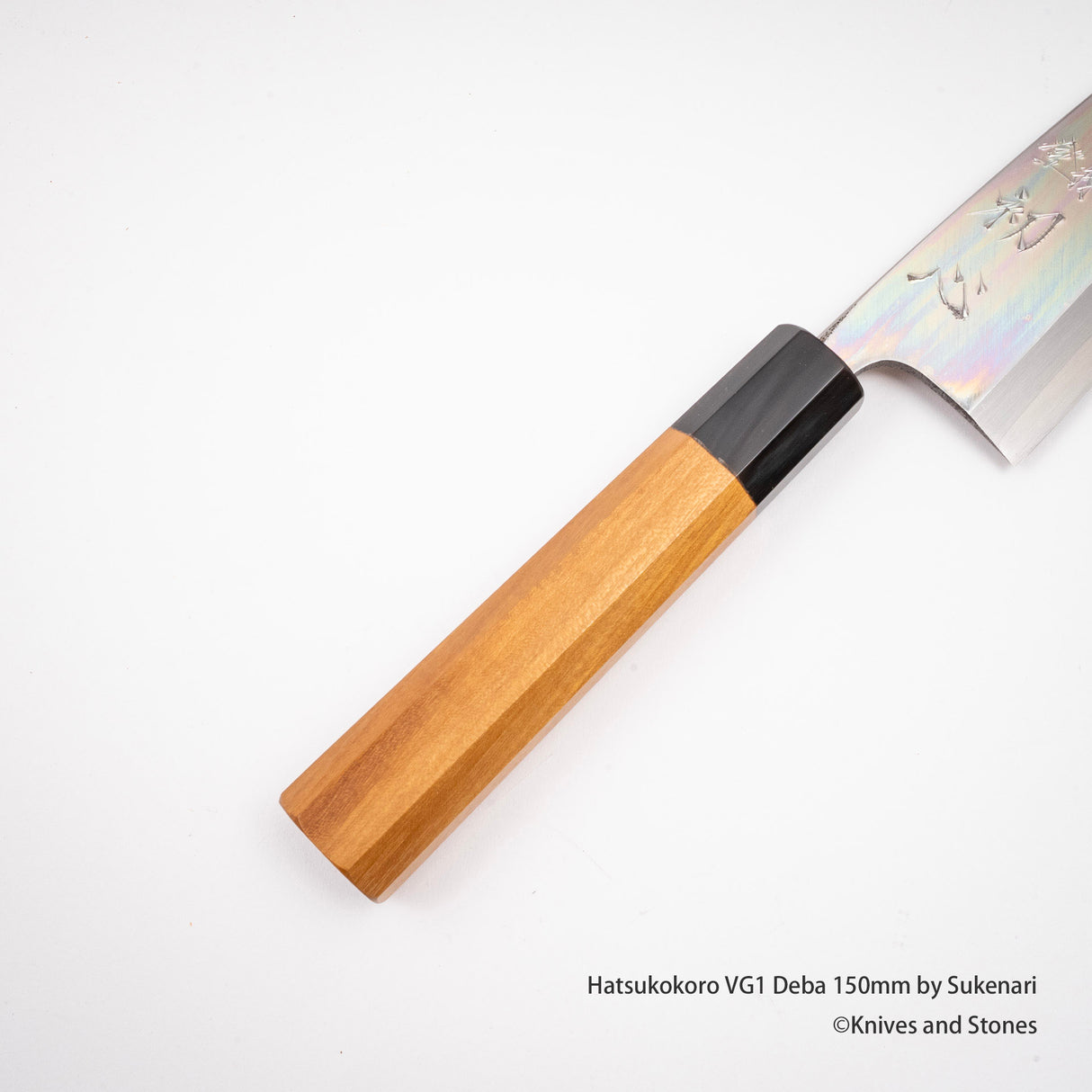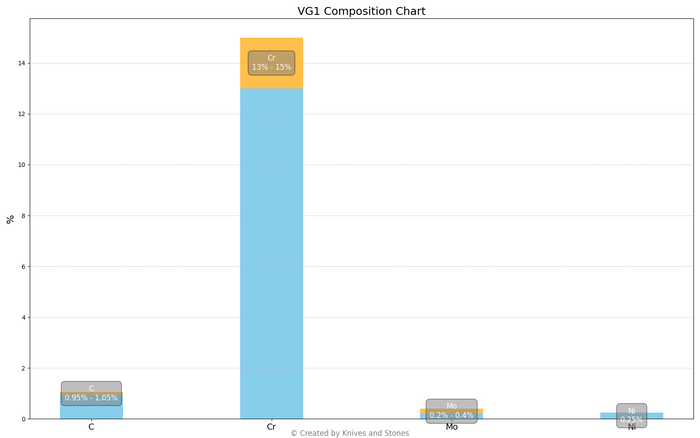Hatsukokoro | SKU:
HT-HSVG1SK-DE150
Hatsukokoro VG1 Deba 150mm by Sukenari
Sale price
$254.98
Regular price
$299.95
Unit price
/
Unavailable
Hatsukokoro VG1 Deba 150mm by Sukenari is backordered and will ship as soon as it is back in stock.
Couldn't load pickup availability
Detailed Specifications
| Line | Hatsukokoro By Sukenari VG1 |
| Profile | Yanagiba |
| Bevel Type | Single Bevel |
| Weight | 207 g | 7.3 oz |
| Edge Length | 295 mm | 11 39/64″ |
| Heel Height | 33 mm | 1 19/64″ |
| Width @ Spine | 3.7 mm | 9/64″ |
| Width @ Mid | 3.1 mm | 1/8″ |
| Width @ 1cm from Tip | 1.1 mm | 3/64″ |
| Steel | VG1 | Stainless |
| Blade Construction | Nimai - Stainless Clad |
| Hardness (HRC) | 58 - 61 |
| Surface Finish | Migaki |
| Handle | Octagonal Teak Black Ferrule |
| Region | Toyama |
| Best for |
|

| Pros | Cons |
|
|
|
Care Instruction
- Don't cut hard things! Japanese knives are brittle so bone hacking is a NO NO!
- Wash with neutral detergent after use, and wipe dry;
- Please don't wash knife with dishwasher, it will damage the wood handle;
- Be careful not to leave the knife close to a heat source for a long time;
- It is a lot more dangerous to cut with a blunt knife than a sharp knife!
- It is best to sharpen a Japanese knife regularly on a waterstone.






















